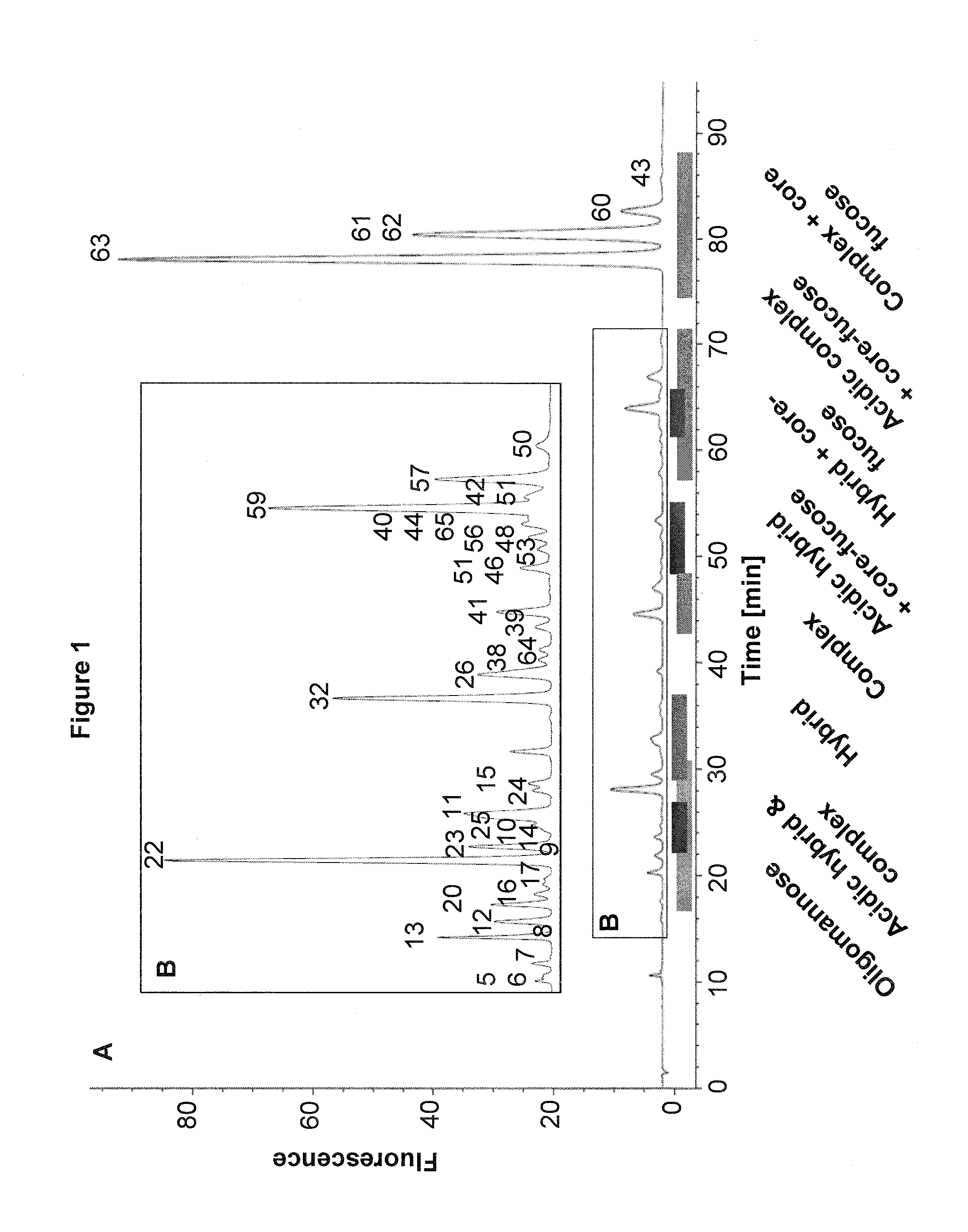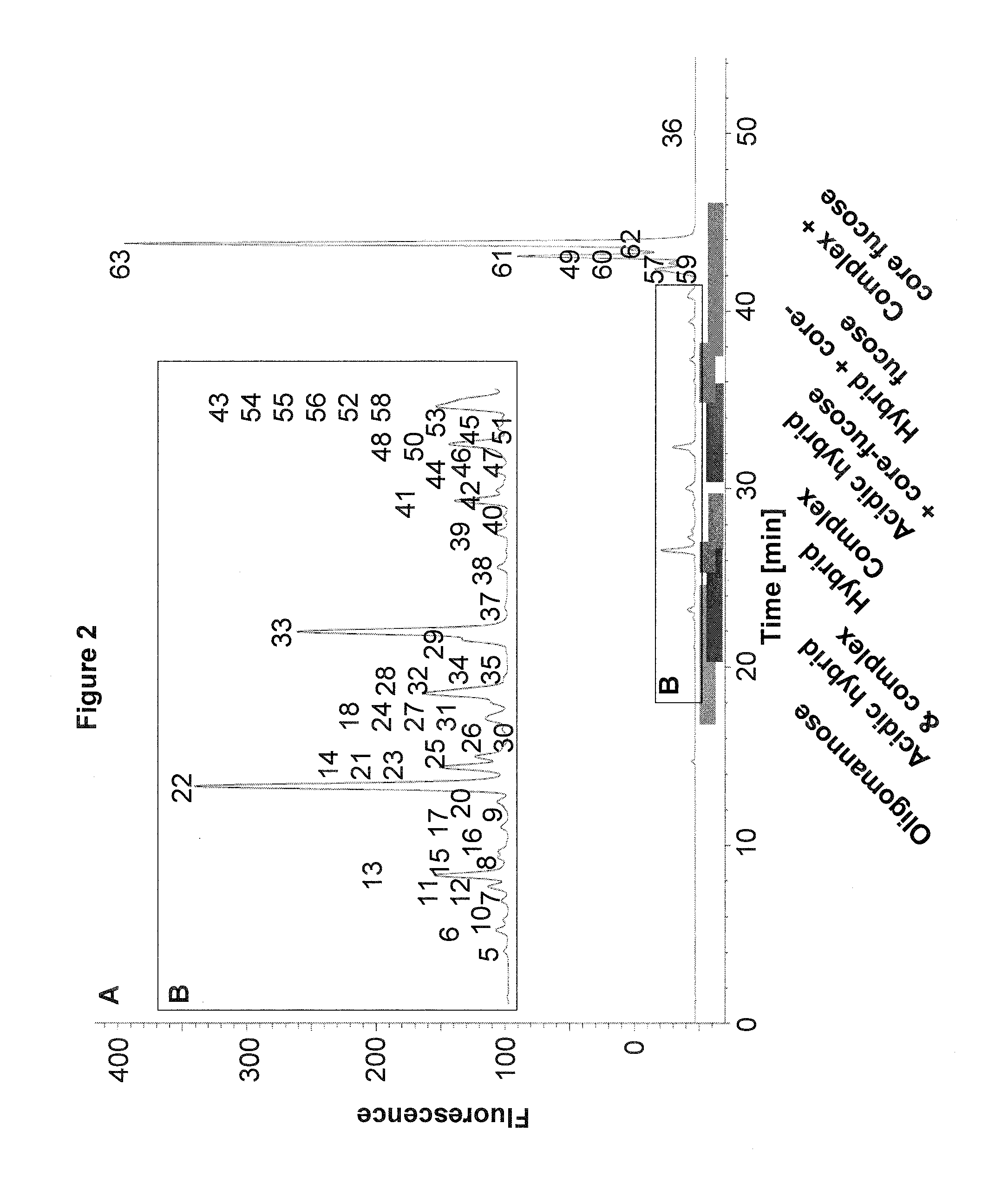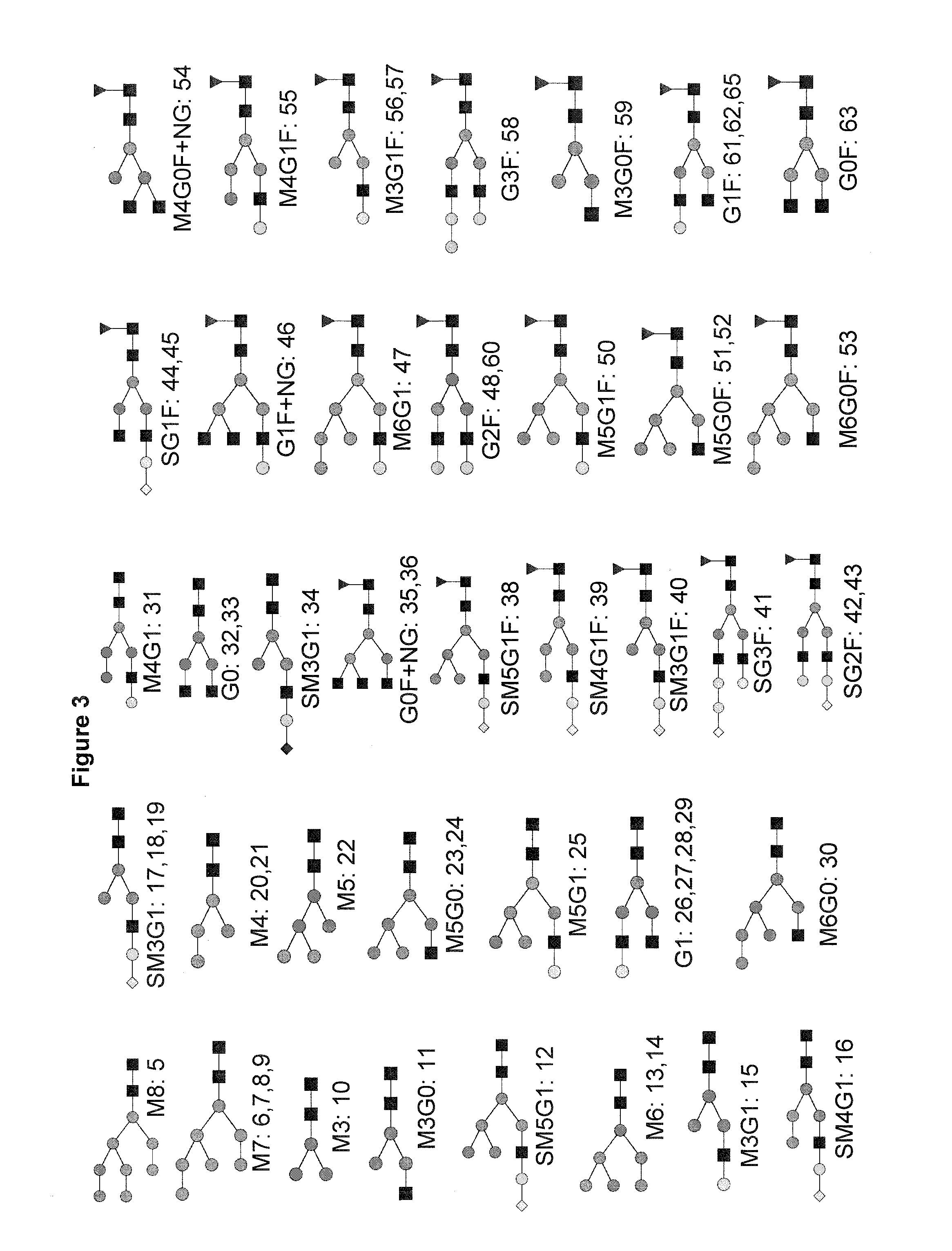Improved method of mapping glycans of glycoproteins
a technology of glycoproteins and mapping methods, applied in the direction of material testing goods, biochemistry apparatus and processes, and post translational modification detection, etc., can solve the problems of reducing sensitivity, difficult discrimination, and limited mass spectrometry information gained from this kind of analytical methods, and achieves sensitivity and selectivity. high, strong retention
- Summary
- Abstract
- Description
- Claims
- Application Information
AI Technical Summary
Benefits of technology
Problems solved by technology
Method used
Image
Examples
example 1
Analysis of Glycans Using the 2-AA Method and the 2-AB Method
Materials
[0116]PNGase F was from New England Biolabs. Acetonitrile (ACN) and acetic acid was from Merck. Formic acid and Sodiumcyanoborohydride was from Fluke. PD MiniTrap™ Sephadex® G-10 columns were from GE Healthcare. DMSO was from Sigma. Amicon Ultra 30K filter devices were from Milipore. The mAb glycan standard was prepared at Sandoz. Monoclonal antibodies 1-3 were obtained from in-house development at Sandoz.
Methods
Enzymatic N-Glycan Release Using PNGaseF
[0117]1 mg of desalted mAb was used. The N-glycans (15 nmol) were released using PNGaseF by incubating the samples overnight (˜17 hours) at 37° C. N-glycans were separated from the proteins using Amicon 30K filter devices and were brought to dryness using a speedvac.
Fluorescence Labeling of Released N-Glycans
[0118]Na[BH3(CN)] and either 2-AA or 2-AB were dissolved in 70% DMSO: 30% acetic acid to obtain concentrations of 63 mg / ml and 50 mg / ml, respectively. 15 μl of t...
example 2
Use of the 2-AA Method Together with Nano-LC-MS
Materials
[0137]PNGase F was from Roche (Penzberg, Germany). Acetonitrile (ACN) and acetic acid was from Merck (Darmstadt, Germany). Formic acid and Picolineborane were from Fluka (Sigma, Munich, Germany). Protein A sepharose, Protein G sepharose and Sephadex® G-10 96-well plates (custom made) were from GE Healthcare (Munich, Germany). RNase B and DMSO were from Sigma (Munich, Germany). AcroPrep™ Advance Omega™ 10K 96-well filter plates were from Pall (Dreieich, Germany). Human serum was from Lonza. Monoclonal antibody A and cell culture supernatants were obtained from in-house development at Sandoz. G0F glycan standard was from Dextra (MoBiTech, Goettingen, Germany). Complex and acidic N-glycan standards were from TheraProtein (Barcarena, Portugal).
Methods
[0138]Purification of IgGs from Human Serum or Cell Culture Supernatant and N-Glycan Release
[0139]Protein G and Protein A sepharose were used to purify IgG from human pooled serum or c...
PUM
 Login to View More
Login to View More Abstract
Description
Claims
Application Information
 Login to View More
Login to View More - R&D
- Intellectual Property
- Life Sciences
- Materials
- Tech Scout
- Unparalleled Data Quality
- Higher Quality Content
- 60% Fewer Hallucinations
Browse by: Latest US Patents, China's latest patents, Technical Efficacy Thesaurus, Application Domain, Technology Topic, Popular Technical Reports.
© 2025 PatSnap. All rights reserved.Legal|Privacy policy|Modern Slavery Act Transparency Statement|Sitemap|About US| Contact US: help@patsnap.com



